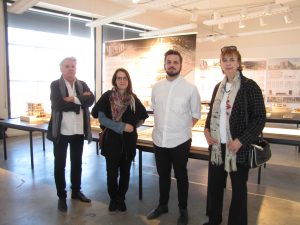Montreal, June 29, 2018–Following a decision by Judge Chantal Corriveau of the Quebec Superior Court (file 500-17-079150-135) of June 7, the court “ORDERED the City of Montreal to obtain from the ministère du Développement durable, de l’Environnement, et de la Lutte contre les changements climatiques a certificate of authorization to undergo work to put a stop to the pollution of the Meadowbrook stream in a maximum of four months from the present decision. The City is to have completed said work in a maximum of 18 months and further proceed to decontaminate the banks of the said stream in a maximum of 24 months from this decision”. (Our translation)
The rehabilitation of a stream sounds like good news. The stream in question is in fact one of the few sections of the historic St. Pierre River still visible in Montreal.
The St. Pierre River likely took its source on the western slope of Mount Royal. It then flowed into St. Pierre Lake (dried up with the creation of the Lachine Canal) to finally reach the St. Laurence River in Verdun. It was diverted to the Little St. Pierre River (on which the French colonists settled at Pointe à Callières) in the 18th century to power some watermills. It was finally buried in the Montreal sewer system in the 19th century, being far too polluted.
Two centuries later, history repeats itself. While many cities around the world are daylighting lost rivers, Montreal might well be forced to cover what is left of the St. Pierre River because it is too polluted and time is of the essence to remedy the situation.
Just where does that pollution come from? Likely from a Montreal storm sewer that is being contaminated from cross-connections in some 200 buildings located for the most part in Montreal-West and Cote St. Luc according to the City of Montreal.
The case has been before the courts since 2013 when the owner of Meadowbrook, Meadowbrook Groupe Pacific, filed an injunction to “force Montreal to stop the contamination by capping the stream or by any other mean that would have a comparable result”. Montreal has tried to join Montreal-West and Cote St Luc to the suit but this was refused by the court. This last decision practically spells the demise of the river.
Groupe Pacific bought the 57 hectares of Meadowbrook in 2006 for $3 million, a sum reflecting the thwarted efforts of the preceding owners, Canadian Pacific Railway and its subsidiaries, to develop the land. With this latest decision, Groupe Pacific will have its land decontaminated at the expense of the taxpayers, which will increase its value and increase the area, the developer having gotten rid of the river that runs through it.
The MDDELCC should not allow the City of Montreal to bury the river. The whole land plays a pivotal role in absorbing spring runoff and rainfall and provides a welcome respite to migrating birds. With the reduction of the wetlands in the Technnoparc in St. Laurent and work on the Turcot exchange near the St. Jacques escarpment, here is another area on the migratory bird flight plan to be destroyed.
For more information:
Louise Legault, director, Les Amis du Parc Meadowbrook























